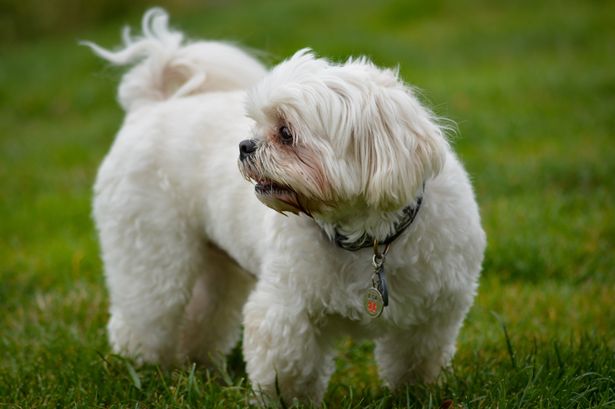As the pollen counts begin to rise, many people will start to suffer with hay fever and many dogs will too.
When spring transitions to summer and the pollen count begins to skyrocket, people across the UK start to suffer from the cold-like symptoms of a pollen allergy. Dogs and humans can have the same allergic reaction which causes hay fever, however the symptoms can appear different.
These can also be hard to immediately identify in dogs. Bruce's, a doggy day care brand, compiled some top tips on how to identify hay fever in your dog, and how you can avoid or remedy the condition.
READ MORE: This Morning's Phillip Schofield issues statement as he steps down from ITV
Step one is identifying whether your dog is suffering from hay fever, as it may not be immediately obvious. Although a runny nose, streaming eyes and sneezing can be symptoms in dogs, the most common is in fact, itchy skin.
Pet owners are told to keep an eye out for sore, red, flaky skin, or if they’re scratching more than usual. This can also sometimes lead to the loss of patches of fur.
Prevention is also another tip, according to experts. The pollen count is highest at midday, so pet owners are advised to take walks when levels are lower in the early morning and late evening.
Giving your dog a wipe down or clean after every walk will also get rid of any leftover pollen. Dog owners are advised to change their bedding and vacuum their house regularly.
Keeping on top of your dog’s regular flea and worming treatment can help alleviate itchiness and make your dog more comfortable when suffering from minor hay fever symptoms also. If your dog is suffering particularly badly, be sure to check in with your vet before ordering any medications yourself.
Your vet will be able to recommend suitable medication for your dog specifically, whether it's shampoos, creams, eye/ear drops or even injections in some cases. Antihistamine treatments should only be used as a last resort and under the careful direction of your vet, as some brands will contain ingredients which are not safe for dogs.
Discuss the options in length with your vet and consider that even the antihistamine options that are safe for dogs will likely make them drowsy.
These tips are particularly worth considering if your pet fits into the list of breeds which are most susceptible to hay fever, as they may be suffering from symptoms without you realising. The breeds that most commonly suffer from a pollen allergy are:
- Cairn terrier
- Wire-haired terrier
- Boston terrier
- West Highland white terrier
- Poodles
- Dalmatians
- Schnauzers
- Irish setter.
READ NEXT:
Trial collapsed after disgraced police officer researched defendant
Drug baron who imported £1bn of cocaine found dead in prison cell
Meet the husband and wife team behind Sefton Park's coffee cart
Headteacher handed in retirement forms weeks before devastating diagnosis
Matalan launches bank holiday sale on summer garden essentials

